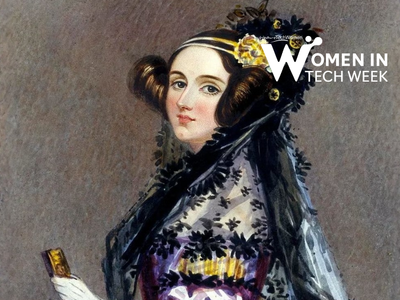Celebrating Women in Tech Week 2024
As we celebrate Women in Tech Week, we must recognise the incredible strides women have made in the tech industry, especially in leadership roles. The journey toward gender equality in leadership within the UK tech sector is far from complete. On Women in Tech Week let's take this opportunity to celebrate the women breaking barriers today, while also addressing the work that still needs to be done.
Women in Leadership in UK Tech: Still Underrepresented
While the tech industry has made progress in promoting gender diversity, there is still a significant gap to be bridged. Women currently hold only 12.5% of board-level positions in tech companies. Even in senior leadership roles, female representation is still limited, with just 17% of leadership roles held by women.
This underrepresentation points to systemic challenges, but it also highlights the potential for growth. More women in leadership not only brings fresh perspectives but also enhances innovation and business performance.
The Gender Pay Gap: An Ongoing Challenge
Another critical issue facing women in the UK tech industry is the gender pay gap, which remains at around 16% on average. This gap reflects deep-rooted inequalities that persist in many organisations. Pay disparity discourages women from pursuing long-term careers in tech, affecting their ability to ascend to leadership roles.
However, these issues can be solved. As we celebrate women in tech week we must look at attracting women in tech and creating and inclusive workplace.
Solutions for Attracting More Women into Tech
- Proactive Recruitment of Women None bias job adverts are the foundation to creating an inclusive recruitment process. By using neutral language in job adverts companies can attract more women to apply for roles.
- Clear Progression Pathways Organisations should provide transparent career progression opportunities. By promoting internal career development, offering sponsorships and encouraging women to take up leadership roles, companies can help break down the barriers to advancement.
- Flexible Working Conditions A key factor in attracting more women to tech is ensuring flexibility in the workplace. Providing options for remote work, flexible hours and support for childcare can make the tech industry more appealing to women, particularly those balancing family and career commitments.
- Commitment to Closing the Gender Pay Gap Companies need to commit to closing the gender pay gap by regularly reviewing salary structures and making sure women are paid equally for the same roles as men. Gender pay audits and transparency in compensation are essential steps toward achieving this goal.
- Creating an Inclusive Company Culture To truly support women in leadership positions, businesses need to cultivate a culture of inclusion. By actively promoting diversity, encouraging allyship, and tackling unconscious bias, organisations can foster an environment where women feel empowered to take on leadership positions.
The Lack of Female Representation in Tech
Women in Tech Week coincides with Ada Lovelace Day, a day honouring the pioneering work of Ada Lovelace, who is often regarded as the world’s first computer programmer. While women like Ada Lovelace have made significant contributions to technology, the journey toward gender equality in leadership within the UK tech sector is far from complete.
The underrepresentation of women in leadership and the persistence of the gender pay gap are challenges we must all work to overcome. By actively implementing solutions and fostering an inclusive environment, we can attract and retain more women in tech leadership, creating a more diverse and innovative industry for the future.
Why is Women in Tech Week Important?
This Women in Tech Week is a moment to reflect on both how far we’ve come and how far we still need to go. As we look forward, we need to make a strategic effort to create more opportunities for more women to enter and thrive in tech roles. With a collective commitment to change, the future of tech will not only be more diverse, but also more equitable.
Learn more about building inclusive recruitment practices into your talent attraction strategy to build a diverse workforce.



